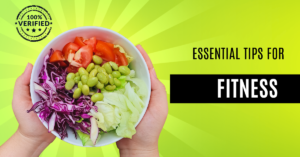In a world filled with fancy gym equipment and high-tech fitness gadgets, it’s easy to overlook one of the most effective tools for getting in shape: your own body. Bodyweight exercises offer a simple, accessible, and incredibly powerful way to build strength, increase flexibility, and improve overall fitness. Whether you’re a beginner looking to start your fitness journey or an experienced athlete seeking to mix up your routine, bodyweight exercises can help you achieve your goals without ever stepping foot in a gym.
The Foundation of Bodyweight Fitness
At its core, bodyweight fitness is about using the weight of your own body as resistance to build strength and endurance. This approach to exercise has been around for centuries, practiced by ancient warriors, athletes, and everyday people alike. The beauty of bodyweight exercises lies in their simplicity and versatility. You don’t need any special equipment or a gym membership to get started. All you need is a bit of space and the willingness to challenge yourself.
One of the key advantages of bodyweight exercises is their ability to engage multiple muscle groups simultaneously. Unlike many machine-based exercises that isolate specific muscles, bodyweight movements often require full-body engagement. This not only leads to more efficient workouts but also helps improve overall functional strength and coordination. For example, a simple push-up engages your chest, shoulders, triceps, and core muscles all at once, providing a comprehensive upper body workout in a single movement.
Moreover, bodyweight exercises are incredibly scalable. As you progress and get stronger, you can modify exercises to make them more challenging. This might involve changing your body position, increasing the number of repetitions, or slowing down the tempo of each movement. This built-in progression system ensures that bodyweight fitness can continue to challenge you, regardless of your fitness level.
Building a Comprehensive Bodyweight Routine
To get the most out of bodyweight training, it’s important to create a well-rounded routine that targets all major muscle groups. A balanced approach not only ensures overall strength development but also helps prevent injuries and imbalances. Let’s explore some key exercises that form the foundation of an effective bodyweight fitness program.
For upper body strength, push-ups are an excellent starting point. They target the chest, shoulders, and triceps, while also engaging the core for stability. As you progress, you can try variations like diamond push-ups for more tricep emphasis or decline push-ups to target the upper chest. Pull-ups and chin-ups are fantastic for building back and bicep strength, though they do require a bar or sturdy overhead surface. If you don’t have access to a pull-up bar, inverted rows using a table or desk can be a great alternative.
Lower body exercises are crucial for building overall strength and power. Squats are a fundamental movement that targets the quadriceps, hamstrings, and glutes. They can be made more challenging by progressing to single-leg variations like pistol squats. Lunges, in all their variations (forward, reverse, side), provide an excellent way to work on balance and unilateral leg strength. For posterior chain development, glute bridges and hamstring curls using a smooth surface (like a hardwood floor and a towel) can be highly effective.
Core strength is essential for overall fitness and injury prevention. Planks are a staple exercise that engages the entire core, including the deep stabilizing muscles. As you build strength, you can progress to more dynamic movements like mountain climbers or bicycle crunches. For oblique work, side planks and Russian twists are excellent choices.
Putting It All Together: Creating Your Workout Plan
Now that we’ve covered some key exercises, let’s talk about how to structure your workouts. A well-designed bodyweight fitness routine should include a mix of exercises targeting different muscle groups, with an emphasis on compound movements that engage multiple areas at once.
One effective approach is to create a full-body workout that you can perform 3-4 times per week. This might include a warm-up followed by a circuit of exercises such as push-ups, squats, plank holds, lunges, and mountain climbers. Perform each exercise for a set number of repetitions or for time, then move on to the next with minimal rest in between. After completing the circuit, rest for 1-2 minutes and repeat 2-3 times.
As you progress, you can increase the difficulty by adding more repetitions, extending the time under tension, or incorporating more challenging variations of each exercise. It’s also beneficial to vary your workouts to prevent boredom and plateau. This might involve changing the order of exercises, introducing new movements, or experimenting with different workout structures like HIIT (High-Intensity Interval Training) or EMOM (Every Minute on the Minute) formats.
Remember, consistency is key in any fitness journey. Start with a routine that challenges you but is manageable, and gradually increase the intensity as you build strength and endurance. Listen to your body, and don’t be afraid to modify exercises or take rest days when needed.
Bodyweight fitness offers a powerful, accessible way to transform your body and improve your overall health. By mastering these fundamental movements and consistently challenging yourself, you can achieve remarkable results without ever stepping foot in a gym. So clear some space, set aside some time, and start sculpting your body using nothing more than your own weight and determination. Your journey to a fitter, stronger you begins now.



